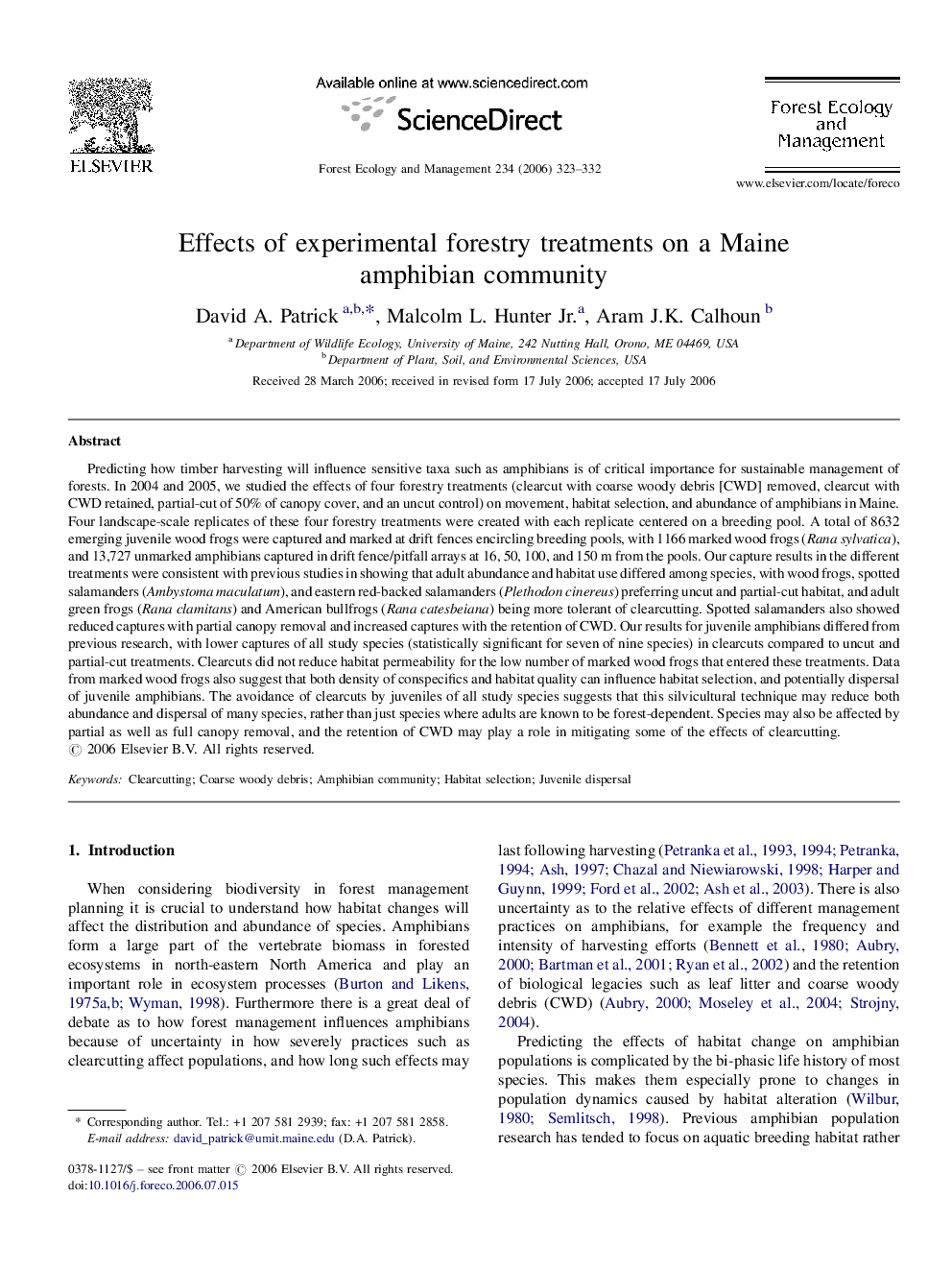| کد مقاله | کد نشریه | سال انتشار | مقاله انگلیسی | نسخه تمام متن |
|---|---|---|---|---|
| 90217 | 159372 | 2006 | 10 صفحه PDF | دانلود رایگان |

Predicting how timber harvesting will influence sensitive taxa such as amphibians is of critical importance for sustainable management of forests. In 2004 and 2005, we studied the effects of four forestry treatments (clearcut with coarse woody debris [CWD] removed, clearcut with CWD retained, partial-cut of 50% of canopy cover, and an uncut control) on movement, habitat selection, and abundance of amphibians in Maine. Four landscape-scale replicates of these four forestry treatments were created with each replicate centered on a breeding pool. A total of 8632 emerging juvenile wood frogs were captured and marked at drift fences encircling breeding pools, with 1166 marked wood frogs (Rana sylvatica), and 13,727 unmarked amphibians captured in drift fence/pitfall arrays at 16, 50, 100, and 150 m from the pools. Our capture results in the different treatments were consistent with previous studies in showing that adult abundance and habitat use differed among species, with wood frogs, spotted salamanders (Ambystoma maculatum), and eastern red-backed salamanders (Plethodon cinereus) preferring uncut and partial-cut habitat, and adult green frogs (Rana clamitans) and American bullfrogs (Rana catesbeiana) being more tolerant of clearcutting. Spotted salamanders also showed reduced captures with partial canopy removal and increased captures with the retention of CWD. Our results for juvenile amphibians differed from previous research, with lower captures of all study species (statistically significant for seven of nine species) in clearcuts compared to uncut and partial-cut treatments. Clearcuts did not reduce habitat permeability for the low number of marked wood frogs that entered these treatments. Data from marked wood frogs also suggest that both density of conspecifics and habitat quality can influence habitat selection, and potentially dispersal of juvenile amphibians. The avoidance of clearcuts by juveniles of all study species suggests that this silvicultural technique may reduce both abundance and dispersal of many species, rather than just species where adults are known to be forest-dependent. Species may also be affected by partial as well as full canopy removal, and the retention of CWD may play a role in mitigating some of the effects of clearcutting.
Journal: Forest Ecology and Management - Volume 234, Issues 1–3, 1 October 2006, Pages 323–332